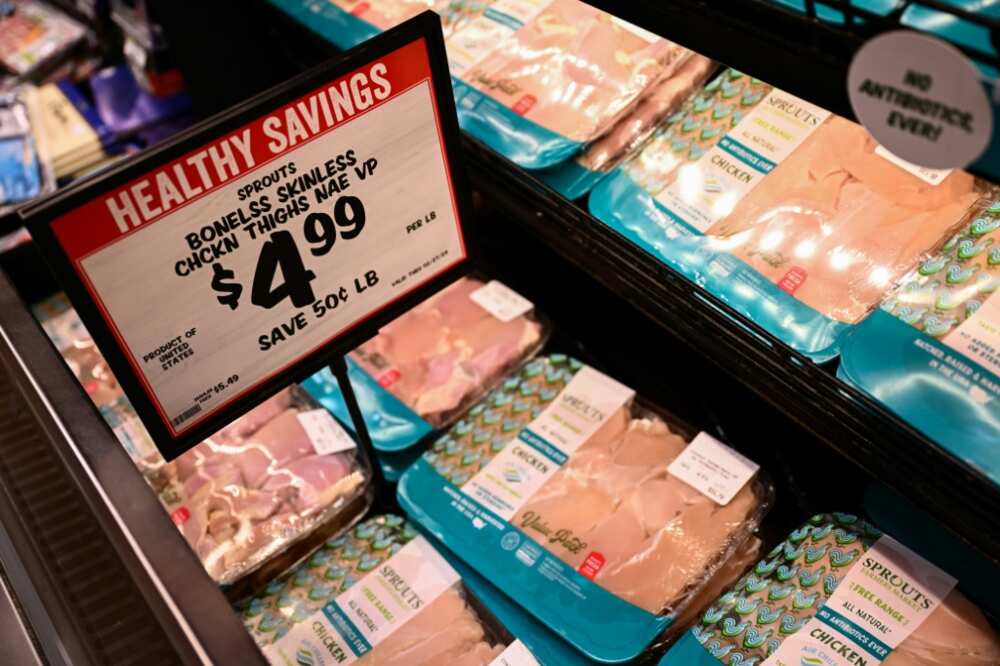US Fed's favored inflation measure accelerates, dimming rate cut hopes

Source: AFP
The US central bank's favored measure of inflation accelerated last month, according to government data published Friday, pushing back the chances of an interest rate cut this summer.
The hotter print is likely to cement the view that inflation, while down sharply since 2022, remains a challenge, and could keep the Federal Reserve on pause as it seeks to battle rising prices.
It also complicates US president Joe Biden's reelection message as he seeks to convince still-skeptical consumers that the economy is heading in the right direction ahead of November's vote.
The personal consumption expenditures (PCE) price index rose at an annual rate of 2.7 percent in March, up 0.2 percentage points from a month earlier, the Commerce Department said in a statement.
This was above the median forecast of 2.6 percent in a survey of economists conducted by Dow Jones Newswires and The Wall Street Journal.
Much of the overall annual rise came from the services sector, which increased at an annual rate of 4.0 percent.
PAY ATTENTION: Share your outstanding story with our editors! Please reach us through info@corp.legit.ng!
Among the more volatile items, energy prices rose by 2.6 percent from a year ago, while food prices were up 1.5 percent.
"While inflation has fallen more than 60 percent from its peak, today's report reinforces the importance of our ongoing work to bring costs down," White House national economic advisor Lael Brainard said in a statement.
'Core' inflation remains elevated
On a monthly basis, PCE inflation rose by 0.3 percent, in line with the figure from February, the Commerce Department said.
The closely watched "core" measure of inflation, which strips out food and energy costs, rose at an annual rate of 2.8 percent in March, unchanged from a month earlier.
The March data reaffirm the concern among economists that inflation is proving to be more stubborn than previously thought -- complicating the Federal Reserve's fight to bring it down firmly to its long-term target of two percent through interest rate hikes.
For much of last year, its policy appeared to be working: Inflation came down sharply, even as economic growth and the labor market continued to show signs of resilience.
But three months of higher inflation data since the start of the year suggest that fight is not over yet.
"The recent data have clearly not given us greater confidence, and instead indicate that it's likely to take longer than expected to achieve that confidence," Fed Chair Jerome Powell told an event in Washington earlier this month.
Personal savings dwindling
As recently as December, futures traders were expecting interest rate cuts to come as early as March, according to data from CME Group.
They now assign a probability of more than 60 percent that the first of the Fed's three expected cuts this year will arrive by mid-September.
"At next week's May FOMC meeting, we think the Fed will take a wait-and-see approach to cuts while giving policy more time to work," Bank of America wrote in a note to clients on Friday, referring to the Fed's next rate-setting Federal Open Market Committee meeting next week.
"The hot inflation readings through March should write off any rate cuts in the first half of 2024," Nationwide senior economist Ben Ayers wrote in an investor note after the PCE data were published.
"Given the momentum for the economy and prices, we don't expect the Fed to strongly consider easing monetary policy until its September meeting at the earliest," he continued, adding that there was a risk that economic resilience could delay cuts until 2025.
The data published Friday also show that personal income accelerated last month, rising by 0.5 percent in March from a month earlier, the Commerce Department said.
In a sign that consumers are dipping further into their savings to fund their spending habits, personal savings as a percentage of disposable income fell to 3.2 percent in March from 3.6 percent in February.
PAY ATTENTION: Stay Informed and follow us on Google News!
Source: AFP




